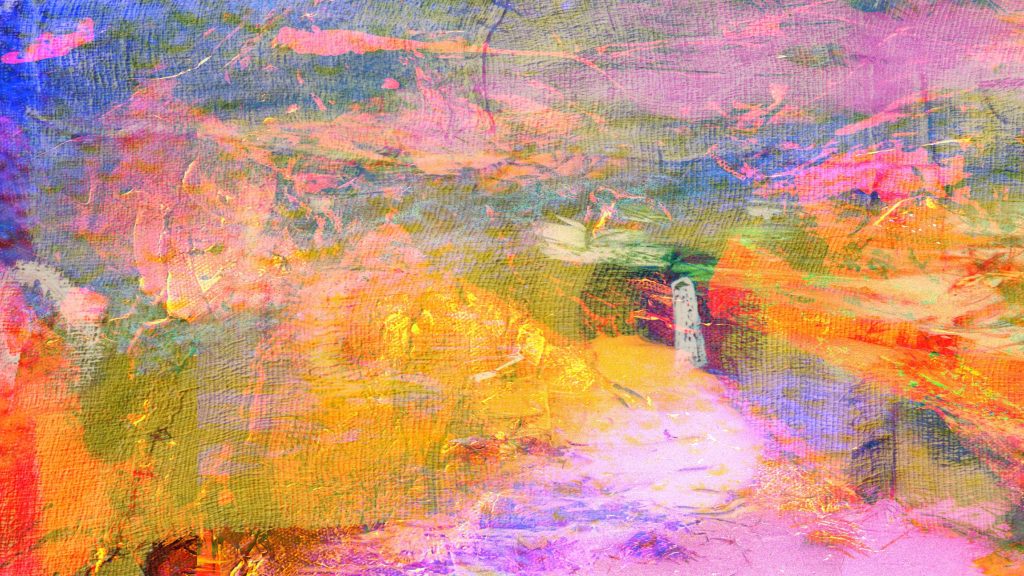 A vision is a curious thing – living in the beginning, middle and end of your heroic story.
A vision is a curious thing – living in the beginning, middle and end of your heroic story.
In the beginning of our story, a vision is the call to action that propels us on the road. During the middle part of our journey, it’s the light that guides us, as we discover the true meaning of where we are going. At the end, it’s what we must resolve. Did we achieve the vision and meet our goal? Or did our original vision transform as we missed our goal yet found ourselves?
We began this series on using a story framework to reinvent your career/life by exploring our Origin Story, where we mine the gold from our past. Last week, we explored the Middle Muddle, the zone where we confront obstacles while advancing towards our dreams. This week, we focus on the future – and how to find the future vision that will pull us into action.
In a story roadmap, creating your past, empowering your present, and inventing your future all weave together.
But how do we develop a vision that will be the unifying thread throughout our journey? With many techniques for visioning available, we can choose those that work best for us. (Unless we’re hit by the proverbial blot of lightening – a bit hard to anticipate in planning.)
Here are 8 techniques I’ve used with myself or with clients. (I hope you’ll add others that have worked for you…)
8 ways to find your vision
1) The Vision Quest – or travel
Going into the wilderness is a powerful way to listen for a vision. I’ve never done a guided vision quest, although friends have had powerful awakenings on facilitated quests in the arid southwest of the United States. (Just look what 40 days in the desert did for Jesus!) Being alone in the wilderness can challenge us, awaken us, and put life into perspective.
I created a simpler DIY version years ago. After leaving a toxic job where I was appalled by the values inherent in the firm, I needed to clear my head. I rented a “tin tent”, a broken down camper parked permanently on the shores of Puget Sound. I spent a week alone, living without electricity, going to bed at dusk and rising at dawn. I ate simply, hiked at length along the sands, read, journaled and watched sunsets. After a week, I was renewed and able to remember what I cared about, and, even more, I had a new sense of where I was going.
Travel has also given me opportunities to tune myself and make decisions about the future. Exploring foreign lands takes me out of predictable patterns of life, and sitting in a cafe watching people and sipping a cappuccino is a favorite way to invite the muse to give me hints about my future direction.
Suggestion: Whether you go on a guided quest or a DIY version, you’ll want three elements: a question/s you’ll be living with, time alone, and a way to record what you discover.
2) Find it where you are now
In teaching leadership to very down-to-earth and task-oriented engineers, I discovered that the word vision can be off-putting. Announcing, “We’re going to do a visioning exercise” sparks as much enthusiasm as “Let’s all sit in a kumbaya circle and chant”. With such clients, I focus on examining what they are currently doing and amplify what’s already working for them.
I like to offer them an appreciative, present-based way of looking for vision, asking questions like, “What do you love doing now? What would like to be doing more of? How do you see yourself expanding what you like about what you are doing?” Rather than taking them on a journey far out into the future, I invite them to tune into their current stories – and amplify where they get the most juice. Appreciation is key.
Suggestion: Take time to look at what’s working for you right now, then imagine doing more of what you love. What would you amplify? What would you leave behind?
3) Give it time: live the questions
Big questions are powerful. By living into them, and letting them work upon us, answers come in surprising ways…if we give them time.
It’s like the poet Rilke said in his famous quote:
Be patient toward all that is unsolved in your heart and try to love the questions themselves, like locked rooms and like books that are now written in a very foreign tongue. Do not now seek the answers, which cannot be given you because you would not be able to live them. And the point is, to live everything. Live the questions now. Perhaps you will then gradually, without noticing it, live along some distant day into the answer.
This can be hard to do in our fast-forward-get-it-done-now culture. Taking the time to sit with something for a while and let it grow within you feels like an impossible luxury. Yet this is one of the most powerfully ways to anchor a vision: hear what’s in your heart, and let it speak to you in different ways over time.
For two years, as I began a new life on my island home, I gardened. Digging became the perfect, physical opportunity to ask the question, “What am I meant to be doing now?” I dug A LOT (don’t ask me how much) as I began to hear fresh answers about what was calling me and allowed the information to become more solid within me.
Suggestion: Create space to ask big questions about your work, your purpose, your calling. Don’t over think the answers. Just ask. Imagine the questions before you go to sleep. Take the questions on a walk with you, a run, or like me, out into the garden. Don’t force the answers but let them emerge over time. Keep notes about what you start to discover.
4) Be creative
Creating a vision requires energy, imagination, and good access to your subconscious where many of your emerging dreams reside. Creative modalities like music, dance and art open the door to this vital, imaginal world.
Years ago (before I creaked so much), I’d tune up my vision by putting on inspiring music and then dancing like a dervish until my dreams started to feel real.
My friend Lori Parmer uses a process called Intentional Creativity with her clients. Using guided visualizations and painting, she supports them to create Vision Books. As her clients follow Lori through a set of questions, they allow their own muses to influence their art. And through their art, her clients often see new aspects of their own inner wisdom.
The artistic process gives the subconscious mind a safe space to speak.
My friend Claire uses as strategic visioning process where she creates a graphic as her clients talk about their hopes for the future.
Both processes result in visuals that offer you tools for discoveries, and reminders of what you discovered.
Suggestion: Grab some yummy art supplies – paints, paint brushes, colored markers – or clay – whatever medium works best for you. (If you’re dancing, have a pen and paper nearby for later.) Create a series of questions, take a pause for reflection or meditation, and then have fun. No editing. No critique. No expectations. If you enjoy the process you can repeat it and let the answers emerge over time.
5) Dialogue with your future self
I love automatic writing – the idea of asking a question and then listening for the answers that spill forth on to the paper. We know so much more than we think we know, and automatic writing opens the valve to new clues and deeper insights emerging from hidden parts of ourselves.
When I ran a leadership program, we gave students this exercise: write a letter to a wise, old chairman with a question that is burning in your heart. Then take a pause and let him write back to you. I might vary it now and say, write a question to the you that is living successfully in the future. Then let him or her respond.
Suggestion: Pick a time and a place that energizes you (and if you like the extra boost, have a latte at your side to prime the pump.) Ask a question to your future self like: “What is the dream that you discovered and how did you get to where you are now?” (or your own variation). Then write for ten minutes. Keep your pen moving. No judgment. If you get stalled, just write out “and another thing” until the flow starts again. Accept everything that comes. Allow yourself to be surprised.
6) Talk it out
Although listening in silence for the still, small voice within can be a gateway to much insight, my very-extroverted friends like to talk things out. They thrive on the support of engaged listeners who allow them to hear themselves speak. Extroverts talk in order to discover what they already know. New ideas spring out of these monologues, blessed by listeners who are able to suspend judgment, encourage the flow, and throw in a few open-ended questions when needed.
Suggestion: Open mouth and talk (always a good tool for extroverts.) Set your friends up, in advance, to listen for what seems most alive popping out of your mouth. Ask them to give you feedback first on the energy and passion behind what you are saying, not the feasibility. Variation: talk into your voice recorder then listen for what the recoding says back to you.
7) Notice what life has thrown you – or is calling you to do
Sometimes our callings come, not from our inner searching, but from a fly-ball life throws us. Activist-entrepreneur Debra Ruh did not set out to be an advocate for people with disabilities in the workplace. But giving birth to a Down Syndrome daughter, Sara, changed that. As Sara grew, Debra wanted her and other people with disabilities to have opportunities for meaningful work. Debra was at home in corporate life, so she started a business advising companies wanting to hire people with disabilities. For her, the call came from without, and then she made it deeply hers.
Suggestion: Notice what life has thrown you – often in the form of a hardship you’ve endured, an opportunity that’s come your way, or a cause that has always moved you. What do you most care about? Where do you want to change the world? Maybe you don’t initially see the service, product, or path that could emerge from your passions, but keep listening.
8) Listen for clues
Most visions don’t come in fully articulated or ringing like the word of God in The Ten Commandments. They may come in as tiny clues that tickle our imaginations, hints that suggest:”look at this”. Revelations don’t all come in one big wad. Some may be doled out, over time in partial payments.
Years ago, (after my tin-tent adventure) one thing I knew clearly was that I wanted to work in an organization where I could wear my silks on Wednesdays and my jeans on Fridays. Even though it was the barest hint of a vision, this information was vivid for me. (I also knew I liked to speak and teach.) When I found my dream job teaching in a university six months later, the (very flexible) dress code confirmed I was in the right place.
Some clues may be more obvious – coming out of your work mining the past or the present for what you have always cared about or wanted to do. One client was a skilled graphic designer who also had a degree in organizational development. It wasn’t too long before the flamingly obvious jumped out at both of us: she could be a great graphic recorder and facilitator which, indeed she is today.

Step two: Road-test your vision
Just having a vision, doesn’t mean that you immediately launch into action. There’s a next stage called road testing where you try it on for a while.
Road testing doesn’t mean analyzing to death. Bring your intuition and your analysis together the way you would introduce a puppy to a kitten – gently protecting the welfare of both. Instead of trying to pick holes in your vision in order to “reality test” it, take your new inspirations and explore first how they can serve you. Do they suggest insights? Avenues to pursue? Ideas you can use even if the vision seemed really far-fetched?
As you hold your emerging vision, you can ask:
- If this vision were possible, what would it look like?
- What pieces of it can I start exploring now?
- Who is doing something similar who might inspire me?
- What would my vision ask of me?
- What does my heart think of this?
- What parts of it are bright?
- What parts are still cloudy?
Then, as you solidify your sense of what you want, you introduce more analysis:
- What would be the impact on my family? My finances?
- What would it mean giving up?
- How would I need to prepare myself?
- How can I honor my future vision and my current responsibilities?
- Are there any creative ways to approach this I haven’t considered?
And finally, as you use your visions to inspire a plan:
- What markers or indicators can I create that would help me as I start out?
- What are the gremlins or obstacles I need to prepare for?
- What is my strategy?
In walking through this series of questions, you can keep the imaginative spirit of the future alive, as you forge a new trail today.










2 Responses
Sally, thanks so much for this inspiring post. I’m going through an unexpected personal transition right now and this post really resonated with my thoughts for my future endeavors.
Keep up the good work!
Thanks Carolyn – you might also look at the pieces I’ve been writing recently about dealing with the liminal zone – that time that comes before you find the new beginning. Blessings to you!